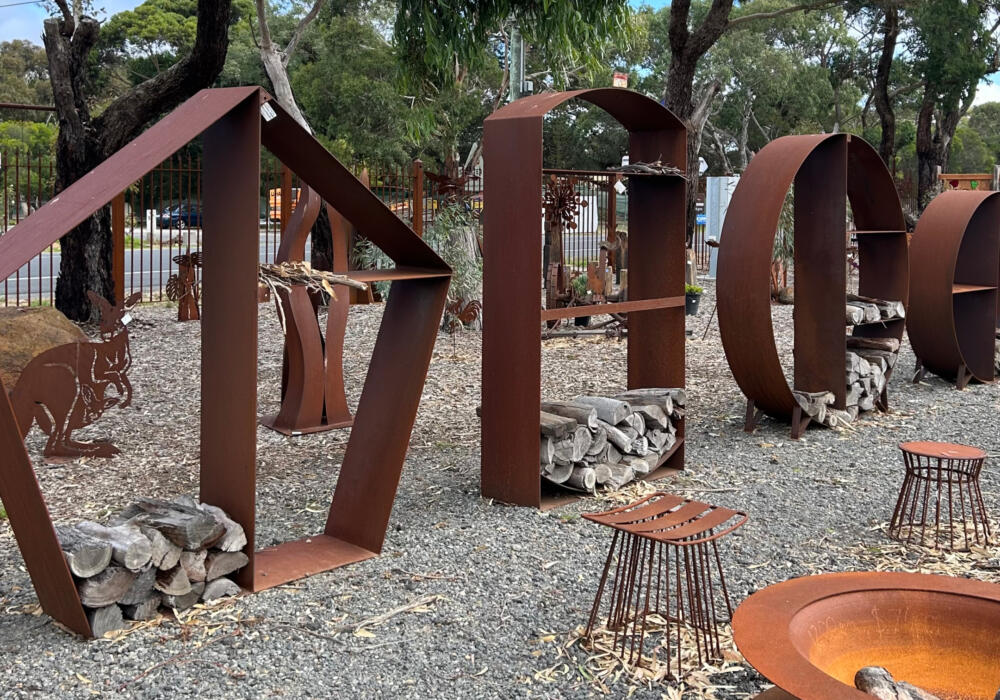Outdoor sculptures are a magnificent way to enhance the beauty of your garden or any outdoor space. However, they are constantly exposed to the elements, which can significantly affect their appearance and durability. Understanding how to weatherproof outdoor sculptures is crucial for preserving their aesthetic value and structural integrity.
In this article, we’ll explore effective methods to protect your sculptures from weather-related damage, ensuring that they remain as stunning as the day you installed them.

Understanding the Impact of Weather on Outdoor Sculptures
Before diving into the techniques of weatherproofing, it’s essential to understand how weather can affect your sculptures. Rain, snow, and even sunlight can cause rust, fading, and other forms of deterioration. This is especially true for sculptures made from metals, like those found in stainless steel garden art.
Effects of Rain and Moisture
Rain and moisture can lead to rust and corrosion, especially in metal sculptures. This is a common issue with rusted metal garden art. Moisture can also cause wooden sculptures to warp or rot over time.
Sunlight Exposure
Continuous exposure to sunlight can cause fading and discoloration in sculptures, especially those made of painted metal or plastic. It’s vital to consider UV protection when learning how to weatherproof outdoor sculptures.
Choosing the Right Materials
The first step in weatherproofing is choosing the right materials for your sculptures. Materials like stainless steel and treated wood offer better resistance to weather conditions. For those considering DIY projects, DIY metal garden sculptures can be a great starting point.
Applying Protective Coatings
Sealants and Varnishes
One of the most effective methods to protect sculptures is by applying a sealant or varnish. These coatings act as a barrier, preventing moisture from reaching the sculpture’s surface. This is particularly beneficial for wood and metal sculptures.
UV-Resistant Coatings
For sculptures exposed to direct sunlight, UV-resistant coatings are essential. These coatings help prevent fading and maintain the sculpture’s vibrant colors.
Regular Maintenance and Inspection
Regular maintenance is key to ensuring the longevity of your outdoor sculptures. Inspect your sculptures regularly for signs of wear and tear, such as rust, cracks, or fading. Addressing these issues promptly can prevent further damage.
Creating a Protective Environment
Using Shelters and Covers
Consider placing your sculptures under a shelter or cover to protect them from harsh weather conditions. This can be particularly beneficial during winter months when snow and ice can cause significant damage.
Strategic Placement
Place your sculptures in locations where they are less exposed to harsh weather conditions. For example, placing them under trees or near buildings can provide some protection from the elements.
Additional Tips for Metal Sculptures
For those with metal sculptures, consider applying rust inhibitors to prevent corrosion. Regularly cleaning your sculptures with a mild detergent can also help maintain their appearance and prevent damage.
Consulting with Professionals
If you’re unsure about the best methods to protect your sculptures, consider consulting with professionals who specialize in art preservation. They can provide tailored advice based on the specific materials and conditions of your sculptures.
Conclusion
By understanding how to weatherproof outdoor sculptures, you can ensure they remain a beautiful and lasting feature of your outdoor space. Whether through protective coatings, regular maintenance, or strategic placement, these methods will help preserve the integrity and beauty of your sculptures for years to come.

FAQs
1. What materials are best for weatherproof outdoor sculptures?
Stainless steel, treated wood, and certain types of stone are considered excellent materials for weatherproof outdoor sculptures due to their durability and resistance to the elements.
2. How often should I apply protective coatings?
It’s recommended to apply protective coatings once a year or as needed based on the sculpture’s exposure to weather conditions.
3. Can I weatherproof my existing sculptures?
Yes, existing sculptures can be weatherproofed by applying appropriate sealants, varnishes, and UV-resistant coatings. Regular maintenance is also crucial.
This article contains affiliate links. We may earn a commission at no extra cost to you.

